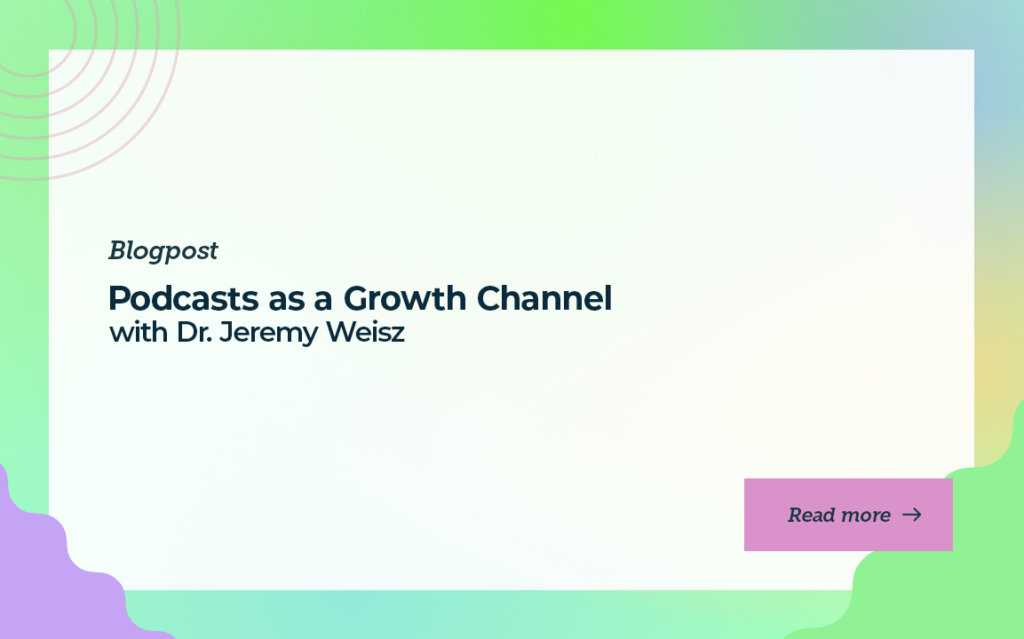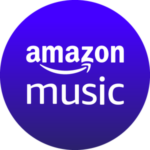Podcasts as a Growth Channel with Dr. Jeremy Weisz

Collin Stewart almost canceled this episode.
Not because the guest wasn’t great, he was. Dr. Jeremy Weisz, co-founder of Rise 25, helped Collin get his podcast off the ground years ago.
No, Collin hesitated because the strategy they were about to talk about… was working too well.
“I don’t want everyone else to start doing this,” Collin admitted. “It’s working so well right now, I almost didn’t want to share it.”
So, what is this strategy?
Podcasting. But not in the way you think.
Podcasting Isn’t a Content Play. It’s a Relationship Engine
Forget what you know about podcasts as marketing content.
For founders, a podcast is a business development tool. It gives you a reason to connect with your Dream 200. The 200 people who could change the trajectory of your business. Prospects, partners, investors, hires. Anyone you want in your orbit.
“I just decided to do it myself,” Collin said. “I know outbound. I know how to run a podcast. So I put it together. And it worked.”
The move is simple:
- Invite high-value people onto your show.
- Use the episode to learn, serve, and build trust.
- Let the relationship develop naturally.
No cold pitch. No awkward ask. Just a conversation that opens doors.
Help Them First: The Jeremy Weisz Philosophy
Jeremy’s not trying to game the system. He’s playing the long game.
“I don’t have someone on my show to get a client,” he said.
“I have them on to help them get a client. Or find a partner.”
That mindset shift is the reason his relationships are so strong. And the reason Rise 25 exists at all. The company didn’t start as a business idea. It emerged from Jeremy’s love for learning, connecting, and creating value through conversations.
The payoff? Nearly everything good in his business life has come from podcasting, including meeting his current co-founder, John Corcoran.
This Isn’t Theory. It’s a Proven Playbook.
Collin’s results aren’t unique. Jeremy’s built his career on helping companies execute this exact strategy. But there’s a key reason it works:
You actually have to care about the person you’re talking to.
Not as a lead. Not as a transaction. As a human.
And that’s where founders have an advantage. You know the space. You know what matters. And you can speak to peers in a way no outsourced content marketer ever could.
If You’re a Founder, Try This
Want a smarter way to open doors? Start here:
- Make a list of 50 people you want in your network.
- Launch a simple podcast. No overthinking, just Zoom and a mic.
- Reach out and invite them on.
- Use the interview to serve, not sell.
Let the compounding effect of conversations do its thing.
Jeremy didn’t build this strategy for clicks. He built it on curiosity, generosity, and a genuine love for connection. And it works.
Don’t Launch a Podcast. Build a Channel With ROI.
If your content strategy doesn’t produce tangible business outcomes, it’s a liability, not an asset.
Every GTM channel draws from a limited pool of founder energy, team focus, and capital if you’re building something that doesn’t compound. In revenue, relationships, or reach. It becomes a silent drag on execution.
It’s not enough to say, “This builds brand.” So does a billboard.
You need to be able to answer:
- What’s the direct business function of this channel?
- What inputs do we control, and what outputs can we expect?
- How do we track ROI before we ever hit publish?
Content is a GTM system, not a side project. That means every element. Guests, messaging, structure, and follow-up. Needs to be designed with business goals in mind. Otherwise, you’re just creating noise.
Founders often say, “We’ll figure out the business impact later.” That’s how channels die.
Instead:
- Anchor the content to a core motion (pipeline, partnerships, recruiting).
- Design the process so it creates value even if no one listens.
- Build for sustainability. Not just launch energy.
A well-structured content system should survive bad weeks, low downloads, or quiet months because the ROI isn’t dependent on volume. It’s embedded in the relationships and outcomes it consistently creates.
If the upside isn’t baked into the format, don’t build it.
Strategic Giving Builds the Warmest Pipeline Ever
The strongest growth channel isn’t email or ads. It’s relationships. However, most founders treat relationship-building as a side effect, not a system.
That’s a miss.
Suppose you want more customers, better partners, and a network that creates unfair access. Stop thinking in terms of outreach and start thinking in terms of strategic giving.
Here’s what that looks like:
- Create a recurring excuse to talk to the right people (a show, newsletter, column).
- Use that format to give first. Visibility, platform, connections, insight.
- Systematize the follow-up with intentional steps to stay at the top of your mind.
This isn’t transactional. It’s operationalized generosity.
If your CRM only tracks pipeline stages, you’re missing the point.
Ask instead:
- Have we featured this person in something?
- Have we introduced them to someone valuable?
- Have we sent a personalized gift or thoughtful follow-up?
- Have we created a reason for them to think of us, without pitching?
The best founders don’t build a network by collecting business cards. They create value loops. And they track giving like other teams track revenue.
If you want outsized access, you have to create outsized value first.
Turns Conversations Into Compound Growth
Most founders get content wrong because they optimize for views instead of value creation.
You don’t need a million downloads. You don’t need a big audience. You need the right conversations with the right people. And a repeatable process for turning those conversations into business outcomes.
Here’s how to think about it:
1. Relationship-Driven Content Compounds Over Time
You don’t need to scale. You need consistency and intent.
If 10% of your guests refer one client annually, and you do 80 interviews, you’ve added 8 high-quality referral sources in year one.
Now do that for 5 years. That’s 40 trusted advocates created through structured giving and aligned conversations.
You’ve built a referral engine, not a podcast.
2. Borrowed Attention Beats Cold Outbound
Partner content works because it borrows credibility, trust, and reach.
It’s not about selling. It’s about co-signing. Every guest, every collaboration, every feature extends your surface area in the market.
Cold email is noisy. Co-created content gets shared, remembered, and reciprocated.
3. Never Give Your Distribution Power Away
Your website should be the center of gravity, not Spotify or Apple.
If someone discovers you through content, they should land on:
- A post hosted on your site (not just an audio player).
- A clear explanation of what you do.
- A next step (CTA) that continues the relationship.
If your content sends traffic to platforms you don’t control, you build on rented land. And you’re missing the point.
4. Your Guest Is the Most Important Audience
The person on your show is the warmest lead you’ll ever talk to. And most founders completely ignore them in the CTA.
Every intro should include:
- Who you are.
- Who you serve.
- What you do.
- Why it matters.
Keep it short. Keep it live. Read it yourself.
Don’t outsource your pitch to a stale pre-roll. Don’t hide what you do. And never assume your guest already knows.
5. Simple Setup. Sophisticated Strategy.
The tech doesn’t matter. Zoom + a decent mic is enough.
What matters is:
- Who you talk to
- How you position your brand
- What happens after the call
Most founders over-engineer the tools and underthink the strategy. Flip that.
This isn’t podcasting. It’s precision GTM, disguised as content.
Build the system right, and your calendar becomes your pipeline.
Turn Conversations Into a Scalable Growth Engine
For founders, execution bandwidth is one of the most limited and valuable resources.
If you want to consistently generate trust, referrals, learning, and brand visibility without draining your calendar, you need two things:
- A lightweight, repeatable system for content and connection.
- A clear owner or process that removes you from the day-to-day post-production loop.
Here’s how to think about it:
1. Focus on Value Creation, Not Content Complexity
The tech is trivial.
- Zoom or Riverside
- A decent mic
- A simple doc to track next steps, guests, or follow-ups
What matters is what happens after you hit record.
- Does the content get published to a channel you own?
- Is the guest properly featured?
- Do they receive a shareable asset?
- Is there a system for circling back, making intros, or reconnecting?
If not, you’re leaving all the leverage on the table.
2. Every Episode Is a Relationship Investment
The win isn’t the episode. It’s everything that follows:
- Introductions to past guests
- Follow-ups that add value
- Mentions and backlinks across future content
- Sharing their work and keeping them top-of-mind
When your system is built to give to the guest consistently, the content becomes a Trojan horse for long-term relationship capital.
And the more you give, the easier it is to generate referrals, warm intros, and downstream deals. Without ever having to “sell.”
3. Outsource the Repetitive. Protect the Strategic.
If you’re a founder, you should own the voice and the guest experience, not the editing, posting, or file wrangling.
You have three options:
- Do it yourself (fine early, but expensive over time)
- Train someone internally (requires setup + process documentation)
- Work with a team that owns the execution so you can stay in your zone
The goal: stay in flow, not in the weeds.
The system will break if every episode takes energy away from the business. It will scale if it gives energy (through learning, connections, momentum).
4. If Podcasting Isn’t Your Channel. Pick a Medium That Is
None of this is exclusive to podcasting. You can run this same motion through:
- A written interview series
- A video channel
- A private founder community
- Curated intros, events, or roundtables
The method doesn’t matter. What matters is:
- You control the distribution
- You consistently give first
- You have a way to stay top-of-mind
Pick the format that works for you and how you build relationships. Then systematize the rest.
Bottom Line
You don’t need content. You need a scalable, give-first system to open doors, build trust, and stay relevant without breaking your execution flow.
Build that, and your calendar becomes a growth engine.
Conclusion
If you take one thing from this, it’s not about podcasting. It’s about building a repeatable system that creates high-leverage relationships, without burning founder time or energy.
You don’t need more content. You need conversations that compound.
Pick a format you’ll stick with. Focus on who you want to connect with. Design for ROI from day one.
And above all: make it easy to give first, over and over again.
Build that system, and you won’t just grow your pipeline. You’ll grow your influence, your insight, and your unfair advantage.
Start simple. Stay consistent. Let the relationships do the rest.
Want to turn conversations into your highest-ROI growth channel? Talk to the team at Rise 25. They’ll help you launch and run a relationship-driven podcast that builds trust, authority, and pipeline.
Ready to scale outbound without burning your brand or your team? Subscribe to the Predictable Revenue newsletter for proven outbound plays. Or talk to us about building a repeatable sales development engine that actually works.
NO TIME TO READ?


